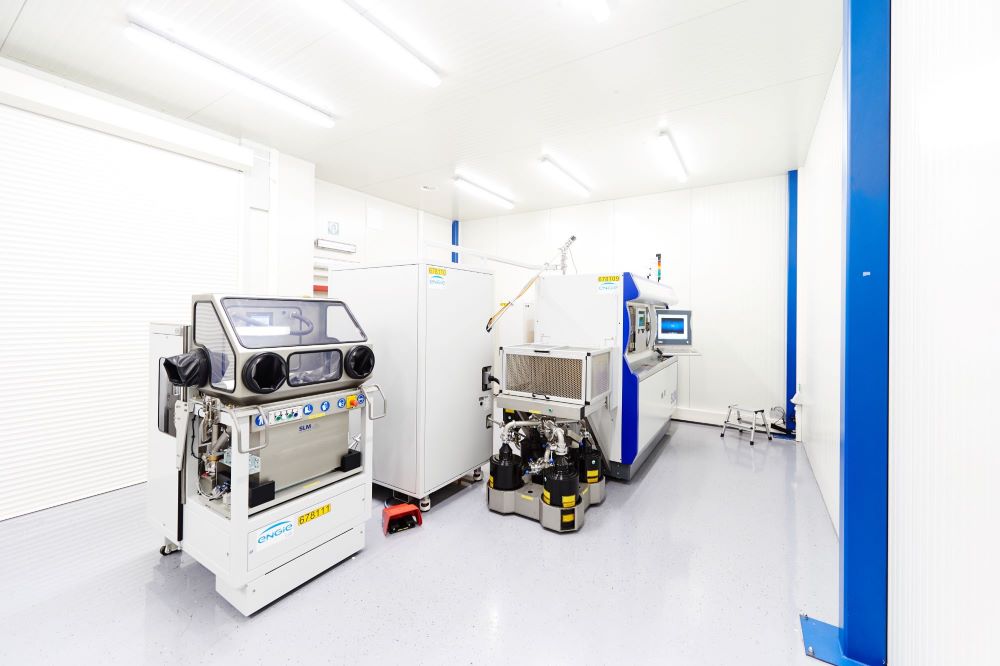An additive manufacturing facility and powder laboratory belonging to French multinational electric utility company ENGIE has received official approval from global independent assessment business, Lloyd’s Register.
One of a number of facilities to achieve this accreditation in the last few years, the site, located in Belgium, joins other businesses on the path to market for certified, metal 3D printed parts.
Presently, Lloyd’s Register’s quality approval guarantees the stability and repeatibility of the facility’s production of SLM316L stainless steel alloy for selective laser melting. The material presents the launch of a new service offering from the company, that ENGIE is hopeful will become an “integral part” of its business. Pieter Hertogs, Section Manager of Maintenance, Services & Products at ENGIE Fabricom Zwijndrecht, comments, “With LR as a partner helping drive high quality AM work, we are confident that AM will soon be an integral part of the ENGIE group’s high end service offerings […]” To which Coralie Goffin, Director of Centralized Generation Department at ENGIE Laborelec, added, “AM is a technology that’s here to stay, with applications across many sectors including power – a key industry for us.
“This facility qualification demonstrates our expertise in the multiple facets of the SLM technology and our commitment to quality excellence.”
A step ahead for 3D printed component qualification
The newly Lloyd’s Register-approved facility at ENGIE is in Zwijndrecht. It is part of ENGIE Fabricom, a faction of the electric utility company specializing in the design, implementation and maintenance of multi-technical installations and services. Working with ENGIE Laborelec, the parent-company’s research and expertise centre for electrical power technologies, ENGIE Fabricom has established a powder production laboratory at this site.
In Lloyd’s Register’s inspection, the facility was audited for the quality of its equipment, personnel, processes and procedures applied to metal powder fabrication. Milena Matijasevic-Clarke was the surveyor in charge of the audit. “ENGIE Laborelec and ENGIE Fabricom were well prepared for the audit with an extremely professional and pragmatic team, which had expert knowledge of the powder bed fusion process,” Matijasevic-Clarke commented, adding that the resulting approval puts “the business a significant step ahead when it comes to achieving component qualifications in the future.”
Other additive manufacturing facilities to have received recognized approval from Lloyd’s Register to date include Australian large-scale metal 3D printing bureau AML Technologies, and 3D Metalforge in Singapore.

Additive manufacturing at Lloyd’s Register
Lloyd’s Register has been providing technical services and infrastructural classification to maritime and other industries for over 250 years. In recent years, this has included support of the growing additive manufacturing industry.
Currently, the company has several projects in progress to help manufacturers define the 3D printing industry and integrate it into existing workflows. ENGIE Lab-Laborelec, together with Rolls-Royce Nuclear, have been working on the “Certification of additive manufactured components” project with Lloyd’s, focusing on energy and offshore sectors.
Lloyd’s is working with The Welding Institute (TWI) in Cambridgeshire, on many of its projects and, notably, the two parties developed an additive manufacturing certification framework for application across marine, industrial manufacturing, and oil and gas sectors.
For all of the latest additive manufacturing news subscribe to our newsletter, you can also follow us on Twitter for to-the-minute updates.
Seeking a career change? Search 3D Printing Jobs now.
Featured image shows SLM Solutions additive manufacturing equipment at ENGIE Lab-Laborelec. Photo via Lloyd’s Register



